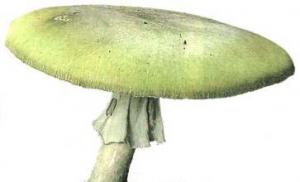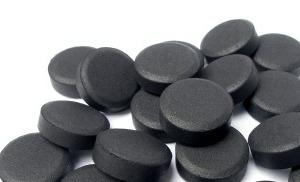The breed of water snakes is pure black. Water snake: features, characteristics, lifestyle
Water already black morph(Natrix tessellata black)
Class - reptiles
Squad - scaly
Family - already-shaped
Genus - snakes
Appearance
Black color. Size up to 1.6 m, but usually 1-1.3 m. Females are larger than males. The body scales are strongly keeled, with 19 scales around the middle of the body. Undertail shields are integral.
Habitat
Water already distributed throughout Southern Europe, in the southern regions of Russia and Ukraine (Don, Volga, Kuban, the coast of the Black and Azov Seas, estuaries, the Kakhovka Reservoir), as well as in Transcaucasia and Central Asia. In general, this is a more southern species than the common snake. However, this variety is quite rare in nature.
In nature
It lives near various flowing and stagnant water bodies, on sea coasts and islands. Can freely live in close proximity to a person in cities, villages, towns, etc. It gets along well in the water, is an excellent swimmer and diver. In nature, they feed on frogs, toads, fish, lizards, as well as small rodents, birds and insects.
reproduction
About 50-60 days after mating, females lay eggs. The masonry is removed and together with the cage is placed in an incubator at a temperature of 27-29°C. . After 50-60 days, the snakes hatch from the eggs, which begin to feed after the first molt.
To maintain this species, a size of 100 50 60 cm or more is required. To make the snake feel good, install an incandescent lamp in one corner of the terrarium, and make a ventilation hole in the other, covered with a strong mesh. This will also provide you with a “Warm” and “Cold” angle, this is done so that the snake can choose the right temperature for itself (Further on, it will be easier for you to navigate in the temperature regime, because the preferences of each individual are still not radically different, but always highly individual). The temperature in a warm corner during the day should be up to 30 ° C. It would be nice to put some kind of stone under the lamp so that the snake can warm itself. At night, the heating must be turned off, this will simulate the change of day and night.
To make the snake feel comfortable, put some free-form shelter in the terrarium: a snag, a shelf, a piece of bark. In the dwelling, be sure to install a cuvette with water, where you could easily swim and lock up during the molting period. And also put a cuvette with peat or use them as soil. After all, snakes always choose damp places for their place of residence, and peat and sphagnum retain moisture well. In order to better retain moisture, periodically spray the soil with a spray bottle.
In terrarium conditions, snakes are frogs, toads and fish. Young people are offered small frogs and fish. Feeding is carried out approximately once every five days, after the snake has digested the previous feed and has made a good mistake. They drink water, for which it should be regularly changed in an artificial pond of the terrarium. Along with feed, it is necessary to give various mineral supplements, for example: crushed eggshells, calcium. Mineral water ("Borjomi") can be added to the drinker. No more than once a month, offer vitamin preparations with food. Give well-balanced reptile food according to the instructions.
Life expectancy up to 15 years.
The water snake is often confused with the viper because of its unusual coloring. In fact, this snake is non-venomous and non-aggressive. The black morph (water snake) attracts the attention of many terrarium keepers with its luxurious appearance. Consider the appearance, habits, range and features of keeping this snake in captivity.
Appearance and classification
Water already belongs to the family already-shaped, the genus of snakes. This is a fairly large snake that spends a lot of time in the water, hunting for fish.
The description of the water snake should begin with the features of the color and structure of the body. The scales are colored olive or brownish. Dark spots are staggered on the body. Sometimes the spots form long stripes along the body. A dark spot in the shape of a triangle is located on the back of the head. The belly is reddish or orange in color. Sometimes there are melanists: they have a uniform color of olive or black. Such snakes are popular among collectors. The water snake can reach 1.6 m in length, although on average in nature these snakes grow about a meter long.
Under the tail are solid shields. In the thickest part of the body, there are 19 pointed scales. Sexual dimorphism is pronounced: females are much larger than males. Females on average live up to 15 years, and males up to 11. Under ideal conditions, this snake can live up to 20 years maximum.
The muzzle has a pointed oval shape, the head is compacted, wide. The eyes are slightly convex, the pupil is highlighted with a bright iris. The eyes and nostrils are adapted for viewing underwater.
Previously, the following subspecies were distinguished: N. t. Hydrus, N. t. Heinrothi. But now the water is already considered a monotypic species.
area
Water is already thermophilic. Its habitats are in the south of Europe, in the east of North Africa, in Central and Western Asia.
The snake prefers to settle near well-populated water bodies with little current or stagnant water. She likes rugged terrain or rocky ledges of ravines. You can meet a water snake in lakes and oxbow lakes, on the seashore or islands, in streams, ditches, mountain rivers. The snake prefers rather clear, not muddy water, in which it is easier to hunt. It occurs in mountain rivers up to 1000 m above sea level. It goes deep into the reservoir from the shore at a distance of up to 5 km. On land, you can meet a water snake at a distance of up to 200 m from the water.
This snake feels great not far from human settlements.

Lifestyle
The snake spends a lot of time in the water, where it hunts. On land, it can be found on flat rocks, branches of shrubs and trees, where it basks in the sun to digest food. The merman spends the night on the shore. To do this, he chooses for himself the holes of rodents, voids under stones and trees, or abandoned nests of waterfowl. The merman already becomes attached to his shelter and always returns to spend the night in one place. At night and early in the morning, the snake is practically inactive. Moves most of all in the water, hunting.
The merman is active for about 9 months a year. It goes into wintering in late autumn - in October or November. Often several snakes winter together in one shelter. It is interesting that the water snake can winter in the same shelter with ordinary snakes. Sometimes in one nest in winter there can be several hundred snakes.

In April, water snakes come out of hibernation. After waking up, they spend hours basking in the spring sun.
In case of danger, the snake can pretend to be dead.
reproduction
Mating takes place in April. Males often fight for the attention of females. Females lay eggs in June-July. To do this, they choose loose earth or a pile of humus in a warm, sun-warmed place. For the incubation of eggs, a temperature within 27 degrees is required for 40-55 days.
In a clutch, there are usually from 4 to 23 eggs ranging in size from 1.5 to 3.3 cm. The babies come out with a size of about 14-18 cm and a weight of about 5-10 grams. From the first minutes they are independent, and therefore, almost immediately after hatching, they go hunting. Water snakes become sexually mature at the age of 3 years.

Food
The basis of the diet of the water snake is made up of small fish: goby, crucian carp, roach, pike, carp, perch. For one hunt, he is able to eat up to 40 small fish. Less often it feeds on amphibians and their tadpoles. The snake pulls out the caught prey on land, where it eats in a secluded place. Afterwards, she settles down in the sun or on heated rocks to digest her food.
On land, the merman already catches lizards, mice, small birds and insects.
Danger to humans and natural enemies
Water is no longer poisonous and not dangerous to humans. This snake is very shy - at a hint of danger it hides under water. Even if a bite occurs, the chance of infection of the wound is small. However, this snake is capable of causing significant damage to fish farms due to its considerable appetite.

The main enemy of the water snake is man. These snakes are often killed, being confused with vipers due to their coloration. It is quite simple to distinguish a water snake from a viper: they have round pupils, highlighted by a bright iris, while vipers have vertical pupils; the shape of the head is different (oval in the snake and triangular in the viper). In addition, human activities affect the reduction of snake habitats. Many snakes die under the wheels of cars on the roads.
The natural enemies of water snakes are large predatory fish: pike, pike perch, catfish. Danger is carried by birds: herons, crows, rooks, storks. Some mammals prey on water snakes: otters, badgers, foxes, desmans, wild boars, hedgehogs, rats. Some snakes are also not averse to eating snakes: vipers, olive and striped snakes.
A terrarium with a minimum size of 100 * 50 * 60 cm is required for a water snake. Good ventilation is needed. There must be a warm and cold corner. In a warm corner, the temperature should reach 30 degrees. An incandescent lamp can provide it, under which you can put a stone that will heat up and give off its heat to the snake. At night, the heating should be turned off to provide the snake with the usual temperature difference.
Water already likes high humidity. In the terrarium, you need to put a shelter where the snake can hide, and a large bowl of water, where it can swim and soak during molting.

Thus, the water snake is a widespread harmless snake, which is often confused with a viper due to its coloration. It lives in warm southern regions near various reservoirs. Black water is already popular with terrariumists due to its beautiful solid color.
Water snake - Natrix tesselata (Laurenti, 1768) Squamous order Squamata Snake suborder Serpentes Snake family Colubridae Status. Category 4 species, status indeterminate. Currently, there is no sufficient information about the state in nature. International status. Protected by the Berne Convention.Spreading.
From Southwestern France, eastern part of North. Africa through Europe, Minor, Western and Central Asia to the Persian Gulf. and Pakistan. The range covers the Black Sea coast, Crimea, the entire Caucasus and Transcaucasia, Kazakhstan. The species extends to the eastern border of the European part of Russia. In the Voronezh region melanistic water snake was found on the left bank and right bank of the river. Bityug in the environs. X. Serov in 1996, 2002 and 2004
Description.
A large snake with a body length of up to 140 cm and a tail about 56 times shorter. The length of males is 80 cm, females 98 cm. The muzzle is pointed. On the upper side of the body there are dark spots arranged in a checkerboard pattern or in the form of narrow transverse stripes. Single-colored individuals are not uncommon, without a pattern. There are also complete melanists.
Features of biology and ecology.
Water is already closely connected with water, lives near flowing and stagnant reservoirs. He loves cliffs and rocky slopes along the banks of rivers and streams, floodplain lakes, oxbow lakes and swamps, reed beds, swamps near springs.
Throughout the season, snakes are active during the day, spending most of their time in the water. They feed mainly on fish, as well as frogs, tadpoles, small rodents and birds. In spring they appear on the surface in March-April. Mating takes place throughout April.
In summer, at the end of June and beginning of July, the female water snake lays from 4 to 18 eggs. By the end of summer or at the beginning of September, young snakes appear, their body length (without tail) is 14.018.5 cm. The activity of snakes stops with the onset of cold weather in October-November.
Number and tendencies of its change. Unknown.
limiting factors. Lack of suitable reservoirs.
Security measures taken and required. Organization of protected areas is required in the key habitats of the species in which its presence has been established.
Sources of information: Key to amphibians... 1977; Amphibians and reptiles... 1998; Tkachenko, 2004. Compiled by: S. V. Repitunov, A. I. Masalykin; photo: S. V. Smirnov.
Already - this is a snake that belongs to the class of reptiles, the scaly order, the suborder of snakes, the already-shaped family (lat. Colubridae).
The Russian name "already" may have come from the Old Slavonic "uzh" - "rope". At the same time, the Proto-Slavic word presumably comes from the Lithuanian angìs, which means "snake, snake." According to information from etymological dictionaries, these words may be related to the Latin word angustus, which translates as "narrow, cramped."
Types of snakes, photos and names
Below is a brief description of several varieties of snakes.
- ordinary snake (Natrix natrix )
It has a length of up to 1.5 meters, but on average the size of the snake does not exceed 1 meter. The snake's habitat passes through Russia, North Africa, Asia and Europe, except for the northern regions. In southern Asia, the range border includes Palestine and Iran. A characteristic distinguishing feature of the common snake is the presence of two bright, symmetrical spots on the back of the head, on the border with the neck. Spots with a black border are yellow, orange or off-white. Occasionally there are individuals with mild spots or no spots, that is, completely black common snakes. There are also albinos. The back of the snake is light gray, dark gray, sometimes almost black. Dark spots may be present on a gray background. The abdomen is light and has a long dark stripe that extends all the way to the snake's throat. Most often, the common snake is found along the banks of lakes, ponds, quiet rivers, in coastal shrubs and oak forests, in floodplain meadows, in old overgrown clearings, in beaver settlements, on old dams, under bridges and in other similar places. In addition, ordinary snakes settle next to human habitation. They make a home in the roots and hollows of trees, in haystacks, in burrows, in other secluded places, in gardens and orchards. They can settle down in basements, cellars, barns, woodpiles, in heaps of stones or garbage. In poultry farms, snakes like moist and warm bedding, and they get along well with poultry. They can even lay their eggs in abandoned nests. But next to large domestic animals that can trample them, snakes almost do not settle.


- Water already (Natrix tessellata )
In many ways it is similar to its close relative, the common snake, but there are differences. It is more thermophilic and is distributed in the southern regions of the habitat of the snake genus - from the south-west of France to Central Asia. Also, water snakes live in the south of the European part of Russia and Ukraine (especially in the mouths of rivers flowing into the Caspian and Black Seas), in Transcaucasia (very numerous on the islands of the Absheron Peninsula in Azerbaijan), in Kazakhstan, in the Central Asian Republics, up to India, Palestine and North Africa in the south and to China in the east. Outside water bodies, snakes are extremely rare. Water snakes live on the coast of not only fresh water bodies, but also the seas. They swim well, can cope with the strong flow of mountain rivers, and stay under water for a long time. The water already has a color of olive, olive green, olive gray or olive brown in color with dark, almost staggered spots and stripes. By the way, Natrix tessellata literally translates from Latin as "chess snake". The belly of the snake is yellowish-orange or reddish, covered with dark spots. There are also individuals that do not have a pattern or completely black water snakes. Unlike an ordinary snake, there are no “signal” yellow-orange spots on the head of the water snake, but often there is a dark spot in the shape of the Latin letter V on the back of the head. The length of the water snake is on average 1 meter, but the largest individuals reach 1.6 meters. With the onset of morning, water snakes crawl out of their shelters and settle under the bushes or, literally, “hang out” on their crowns, and when the sun begins to bake, they go into the water. They hunt in the morning and evening. During the day they bask in the sun on stones, reeds, in the nests of water birds. Water is already non-aggressive and safe for humans. He is not able to bite at all, since instead of teeth he has plates to hold slippery prey. But because of its color, it is confused with a viper and is ruthlessly destroyed.


- Colchis, or big-headed (Natrix megalocephala )
It lives in Russia in the south of the Krasnodar Territory, in Georgia, Azerbaijan, Abkhazia. Already lives in chestnut, hornbeam, beech forests, in thickets of laurel cherry, azaleas, alder, where there are glades and ponds, on tea plantations, near streams. Colchis snakes can be found high in the mountains. They are adapted to life in swift mountain streams. This snake differs from the ordinary grass snake in its broad, concave upper surface head and the absence of light spots on the back of the head in adults. The body of the big-headed snake is massive, from 1 to 1.3 m in length. The top of the body is black, the head is white below, the abdomen with a black and white pattern. In spring and autumn, Colchis is already active in the daytime, and in summer - in the morning and at dusk. The snakes living in the mountains are active in the mornings and evenings. Colchis is no longer dangerous to humans. He escapes from enemies by diving into the water, even despite the rapid flow of the river. The number of large-headed snakes is small and has recently been declining. This is due to uncontrolled capture, with a decrease in the population of amphibians due to the development of river valleys, and with the destruction of snakes by raccoons. Conservation measures are required to preserve this species.

- viper already (Natrix maura )
Distributed in the countries of the Western and Southern Mediterranean, not found in Russia. Snakes live near ponds, lakes, calm rivers, swamps. The snakes of this species got their name because of a color similar to that of a viper: a black-brown pattern in the form of a zigzag strip with large eye spots on the sides of it stands out on a dark gray back. True, in some individuals the color is similar to water snakes, and there are also individuals with a plain gray or olive color. The abdomen is already yellowish, closer to the tail in reddish and black spots. The average length of the reptile is 55-60 cm, large individuals reach 1 meter. Females are larger and heavier than males.


- Brindle already (Rhabdophis tigrinus )
Lives in Russia in the Primorsky and Khabarovsk Territories, distributed in Japan, Korea, Northeast and East China. Settles near water bodies, among moisture-loving vegetation. But it is also found in mixed forests, far from water bodies, in treeless spaces and on the seashore. Tiger snake is one of the most beautiful snakes in the world, the length of which can reach 1.1 meters. The back of the snake can be dark olive, dark green, blue, light brown, black. Juveniles are usually dark grey. The dorsal and lateral dark spots give the snake its striping. Adult snakes have characteristic red-orange, red and brick red spots between dark stripes in the front of the body. The upper lip is already yellow. The snake defends itself from predators by releasing the poisonous secretion of their special neck glands. The brindle is already capable, like, to lift and inflate its neck. When people are bitten by enlarged back teeth and poisonous saliva enters the wound, symptoms are observed, as with a viper bite.


Taken from: www.snakesoftaiwan.com
- Shiny tree snake (Dendrelaphis pictus)
Distributed in Southeast Asia. Found near human settlements, in fields and forests. It lives on trees and bushes. It has a brown or bronze color, a light stripe bordered by black stripes is located on the sides. There is a black "mask" on the muzzle. It is a non-venomous snake with a long, thin tail that makes up a third of its body.

- Angler Schneider(Xenotrophis piscator )
It lives in Afghanistan, Pakistan, India, Sri Lanka, some islands of Indonesia, western Malaysia, China, Vietnam, Taiwan. Lives in small rivers and lakes, in ditches, in rice fields. The color of the snake is olive green or olive brown with light or dark spots that form a checkerboard pattern. The abdomen is light. The length is 1.2 m. The head of the snake is slightly expanded, has a conical shape. Non-poisonous fishermen are aggressive and fast. They hunt mainly during the day, but often at night.

- Eastern earthen already(Virginia valeriae )
Distributed in the eastern United States: from Iowa and Texas to New Jersey and Florida. It differs from other species in its smooth scales. A small snake, the length of which does not exceed 25 cm. The color of the snake is brown, tiny black spots can be observed on the back and sides, the abdomen is light. Ground snakes lead a burrowing lifestyle, live in loose soil, under rotten logs and in leaf litter.

- Shrub green(Philothamnus semivariegatus )
A non-venomous snake that is found throughout most of Africa, excluding arid regions and the Sahara desert. Green snakes live in dense vegetation: on trees, in shrubs growing along rocks and riverbeds. The body of reptiles is long, with a thin tail and a slightly flattened head. The body of the snake is bright green with dark spots, the head is bluish. Scales with pronounced keels. Active during the day. It is not dangerous for a person. It feeds on lizards and tree frogs.


- Japanese already ( Hebius vibakari)
One of the species of snakes found on the territory of Russia, namely in the Far East: in the Khabarovsk and Primorsky Territories, as well as the Amur Region. Distributed in Japan, East China and Korea. Inhabits forests in these regions, thickets of bushes, meadows in the forest zone, abandoned gardens. The length of the snake is up to 50 cm. The color is monochromatic: dark brown, brown, chocolate, brown-red with a greenish tinge. The abdomen is light, yellowish or greenish. Small snakes are light brown or more often black. The non-poisonous Japanese already leads a secretive life, hiding under the ground, stones and trees. It feeds mainly on earthworms.

This is an educational article about water snakes, and it was shortened in the November issue of National Geographic.

Are you taking a picture of a viper, - I heard a voice behind me, - See that you don’t bite.
- No, not a viper, but a snake, - I answered, not looking up from the camera viewfinder and shooting another close-up.
- Yes, vipers are now interbreeding with snakes: they turn out black, and gray, and in a box, and all are terribly poisonous!


Something like this happens every time someone sees me catching or photographing water snakes (Natrix tessellata).

The notoriety of these snakes is just the fruit of the fear of people who are not familiar with reptiles. Water snakes lack the characteristic sign of a non-venomous snake, familiar to everyone - yellow-orange spots at the back of the head, which the common snake (Natrix natrix) has. For this reason, unknowing people classify all snakes without such spots as vipers and consider them poisonous and dangerous. Many people divide all legless reptiles into snakes and just "snakes", referring to vipers. So they say: “Is it really or a snake?”.

As soon as they don’t call water snakes: “a hybrid of a viper and snake”, “chess viper”, “chess”. When shouting “chess snake” on the beach, swimmers jump out of the water and wait for the snake to swim away, or until a “dared man” is found and kills the snake with a stick. One often hears the stories of anglers about "meter-long vipers" swimming across rivers or climbing into cages with fish.
All these stories are not really related to vipers, they are about water snakes. The specific name of the snake N. tessellata is indeed translated from Latin as chess, but the water viper has nothing to do with vipers. It belongs to the genus (Natrix sp.) like the common snake.

For a man, the water one is harmless. This snake's defenses are loud hissing and foul-smelling excrement emitted when threatened. Unlike the common snake, the water snake almost never pretends to be dead.

The main food of water snakes is fish, which they catch among aquatic plants, snags or lying in wait at the bottom. The snake cannot swallow the caught prey under water, therefore it rushes to the shore, where it swallows the fish, having previously turned its head towards itself.

If the prey is too large, the meal can drag on for an hour or even longer. Some snakes die, not calculating their strength and choosing too large a fish.

“The water one is already quite widespread: from southwestern France, the valley of the river. The Rhine is in the west, the southern border of the range runs along the eastern part of northern Africa (to the Persian Gulf, Pakistan), in the east it occurs to the north-west of China, and the northern limits of the occupied territory pass through the Volga-Kama Territory, ”says candidate of biological sciences, employee Volgograd State University, herpetologist Dmitry Gordeev.
“This species belongs to the class of reptiles (Reptilia), the order of snakes (Serpentes), the family of snakes (Colubridae), the genus of real snakes (Natrix) and the species of water snake (Natrix tessellata). The water snake is a relatively large non-venomous snake, like all representatives of this family. Moreover, females, as a rule, are longer than males and can grow up to 1.1 m. Despite its impressive size, it is somewhat smaller than the familiar and easily recognizable common grass snake, which can reach up to 1.14 m.
The muzzle of the water snake, compared to the common one, is more pointed, and there are no yellow-orange spots on the sides of the head. Because of the latter circumstance, it is often confused with such venomous snakes as the common viper and the steppe viper. "Oil on the fire" adds a pattern on the back of a water snake, which vaguely resembles a zigzag stripe of vipers. I repeatedly came across dead snakes, which, apparently, the local population took for poisonous and mercilessly exterminated. On one of the expeditions, I came across a place of "mass execution", where I counted 25 "chess vipers" killed.

However, the water snake has a number of external signs by which it can be easily distinguished from poisonous vipers. The head is most recognizable - in vipers it is triangular in shape and most of the scutes (scales) on it are small, while in the water snake it is oval, and all the scutes are large. If you muster up the courage and look into the eyes of a snake, you can see that vipers, like real predators, have a vertical pupil (like a cat), and a snake has a round one. In addition, vipers are much smaller than snakes: the largest common viper reaches a length of up to 0.73 m.

Vodyanoy already settles near water: along the banks of rivers and irrigation canals, in flood meadows, where he finds his livelihood. Despite the peaceful nature, he is an active predator. Prefers fish of different species - perch, roach, loach, can even hunt pike. Therefore, scientists call it an ichthyophage. The snake pulls the caught prey ashore, where it eats. Much less frequently, the diet includes frogs and their tadpoles.
In the literature there is information about the discovery in the stomach of even a baby of an ordinary viper! The size of the prey can exceed the size of the snake's head, and the movable connection of the lower jaws and some bones associated with them helps to swallow it. Swallowing occurs by alternating movement of the left, then the right half of the lower jaw. This gives the impression that the snake "crawls" on its prey.

The active season lasts almost 9 months, they emerge from winter shelters in April. Soon after this, mating begins, then snakes are found in large numbers. One female can lay from 4 to 20 eggs, of which in July, under favorable circumstances, young growth will appear. Reed beds, tree roots, crevices in the substrate, rodent burrows, stumps and snags serve as a refuge for them. They leave for wintering at the end of October in large groups, sometimes together with an ordinary grass snake. Hedgehogs, desman, muskrat, fox, some birds hunt for snakes: osprey, gray heron, kites, serpent eagle, crow, rook and some others.

Every time I hear mention of a "terribly poisonous checkerboard", I talk about water snakes, their way of life, I try to convince them that these snakes are absolutely not dangerous. But every time I encounter misunderstanding, it’s easier for people to be afraid of the “chess viper” than to admit their belief in rumors and stop killing all snakes that lack the “identification marks” of an ordinary snake.














